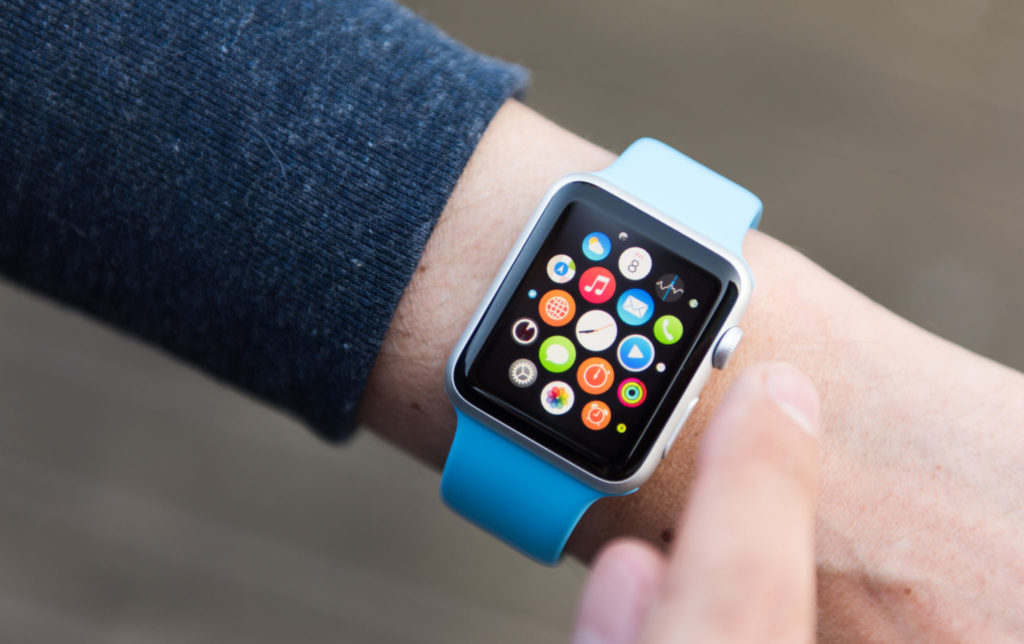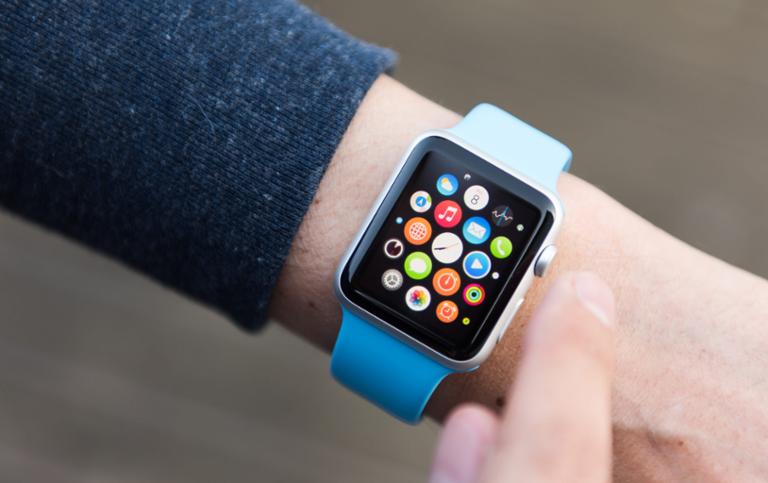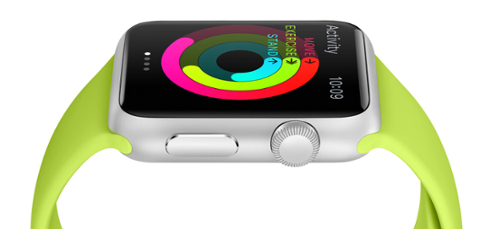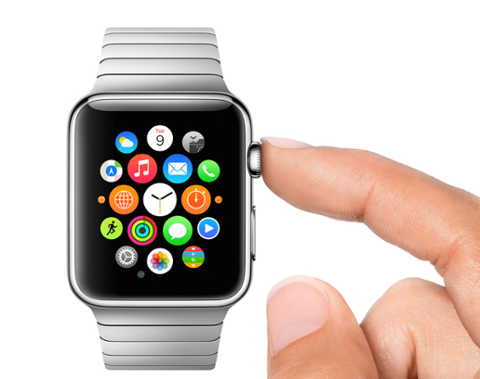 Sixteen years ago, Apple co-founder Steve Jobs introduced the iPod with a unique sales pitch. “This amazing little device holds a thousand songs,” he told the audience. “And it goes right in my pocket.” In an era of portable CD players that held 20 songs at a time (at most), the idea of carrying the equivalent of 50 albums had an undeniable appeal—one that helped the iPod become a bestselling device: With the advent of the iPhone, however, iPod sales began to dip. It was a classic case of device cannibalism: consumers traded up their ultra-portable music players for an ultra-portable phone that could also play music and surf the web. Earlier this year, Apple discontinued the iPod Nano and iPod Shuffle, leaving the iPod Touch as the last device in what was once a proud iPod lineup. Now Apple seems to be positioning Apple Watch, its smartwatch, as a successor of sorts to the iPod. During a Sept. 12 event at Apple’s new Cupertino headquarters, Apple CEO Tim Cook repeatedly used the phrase “40 million songs on your wrist” to describe the new Apple Watch’s integration with Apple Music, the company’s streaming-music service. Given how tightly Apple structures its product keynotes, that phrasing is no accident. The Apple Watch is, in many ways, the successor to the iPod: a lightweight device that lacks the full functionality of the iPhone, but can nonetheless offer a handful of highly specialized features on the go, including music. Like the iPod, the Apple Watch also emphasizes color, thanks to the interchangeable bands. Granted, Apple isn’t positioning the Apple Watch as primarily a music device; over the past three years, its marketing has veered strongly toward fitness and health monitoring. But a “fun” and lightweight device eventually had to replace the iPod in Apple’s portfolio, and it seems like the Apple Watch might be it.
Sixteen years ago, Apple co-founder Steve Jobs introduced the iPod with a unique sales pitch. “This amazing little device holds a thousand songs,” he told the audience. “And it goes right in my pocket.” In an era of portable CD players that held 20 songs at a time (at most), the idea of carrying the equivalent of 50 albums had an undeniable appeal—one that helped the iPod become a bestselling device: With the advent of the iPhone, however, iPod sales began to dip. It was a classic case of device cannibalism: consumers traded up their ultra-portable music players for an ultra-portable phone that could also play music and surf the web. Earlier this year, Apple discontinued the iPod Nano and iPod Shuffle, leaving the iPod Touch as the last device in what was once a proud iPod lineup. Now Apple seems to be positioning Apple Watch, its smartwatch, as a successor of sorts to the iPod. During a Sept. 12 event at Apple’s new Cupertino headquarters, Apple CEO Tim Cook repeatedly used the phrase “40 million songs on your wrist” to describe the new Apple Watch’s integration with Apple Music, the company’s streaming-music service. Given how tightly Apple structures its product keynotes, that phrasing is no accident. The Apple Watch is, in many ways, the successor to the iPod: a lightweight device that lacks the full functionality of the iPhone, but can nonetheless offer a handful of highly specialized features on the go, including music. Like the iPod, the Apple Watch also emphasizes color, thanks to the interchangeable bands. Granted, Apple isn’t positioning the Apple Watch as primarily a music device; over the past three years, its marketing has veered strongly toward fitness and health monitoring. But a “fun” and lightweight device eventually had to replace the iPod in Apple’s portfolio, and it seems like the Apple Watch might be it. Apple Watch is the New iPod. Seriously.
 Sixteen years ago, Apple co-founder Steve Jobs introduced the iPod with a unique sales pitch. “This amazing little device holds a thousand songs,” he told the audience. “And it goes right in my pocket.” In an era of portable CD players that held 20 songs at a time (at most), the idea of carrying the equivalent of 50 albums had an undeniable appeal—one that helped the iPod become a bestselling device: With the advent of the iPhone, however, iPod sales began to dip. It was a classic case of device cannibalism: consumers traded up their ultra-portable music players for an ultra-portable phone that could also play music and surf the web. Earlier this year, Apple discontinued the iPod Nano and iPod Shuffle, leaving the iPod Touch as the last device in what was once a proud iPod lineup. Now Apple seems to be positioning Apple Watch, its smartwatch, as a successor of sorts to the iPod. During a Sept. 12 event at Apple’s new Cupertino headquarters, Apple CEO Tim Cook repeatedly used the phrase “40 million songs on your wrist” to describe the new Apple Watch’s integration with Apple Music, the company’s streaming-music service. Given how tightly Apple structures its product keynotes, that phrasing is no accident. The Apple Watch is, in many ways, the successor to the iPod: a lightweight device that lacks the full functionality of the iPhone, but can nonetheless offer a handful of highly specialized features on the go, including music. Like the iPod, the Apple Watch also emphasizes color, thanks to the interchangeable bands. Granted, Apple isn’t positioning the Apple Watch as primarily a music device; over the past three years, its marketing has veered strongly toward fitness and health monitoring. But a “fun” and lightweight device eventually had to replace the iPod in Apple’s portfolio, and it seems like the Apple Watch might be it.
Sixteen years ago, Apple co-founder Steve Jobs introduced the iPod with a unique sales pitch. “This amazing little device holds a thousand songs,” he told the audience. “And it goes right in my pocket.” In an era of portable CD players that held 20 songs at a time (at most), the idea of carrying the equivalent of 50 albums had an undeniable appeal—one that helped the iPod become a bestselling device: With the advent of the iPhone, however, iPod sales began to dip. It was a classic case of device cannibalism: consumers traded up their ultra-portable music players for an ultra-portable phone that could also play music and surf the web. Earlier this year, Apple discontinued the iPod Nano and iPod Shuffle, leaving the iPod Touch as the last device in what was once a proud iPod lineup. Now Apple seems to be positioning Apple Watch, its smartwatch, as a successor of sorts to the iPod. During a Sept. 12 event at Apple’s new Cupertino headquarters, Apple CEO Tim Cook repeatedly used the phrase “40 million songs on your wrist” to describe the new Apple Watch’s integration with Apple Music, the company’s streaming-music service. Given how tightly Apple structures its product keynotes, that phrasing is no accident. The Apple Watch is, in many ways, the successor to the iPod: a lightweight device that lacks the full functionality of the iPhone, but can nonetheless offer a handful of highly specialized features on the go, including music. Like the iPod, the Apple Watch also emphasizes color, thanks to the interchangeable bands. Granted, Apple isn’t positioning the Apple Watch as primarily a music device; over the past three years, its marketing has veered strongly toward fitness and health monitoring. But a “fun” and lightweight device eventually had to replace the iPod in Apple’s portfolio, and it seems like the Apple Watch might be it. 

